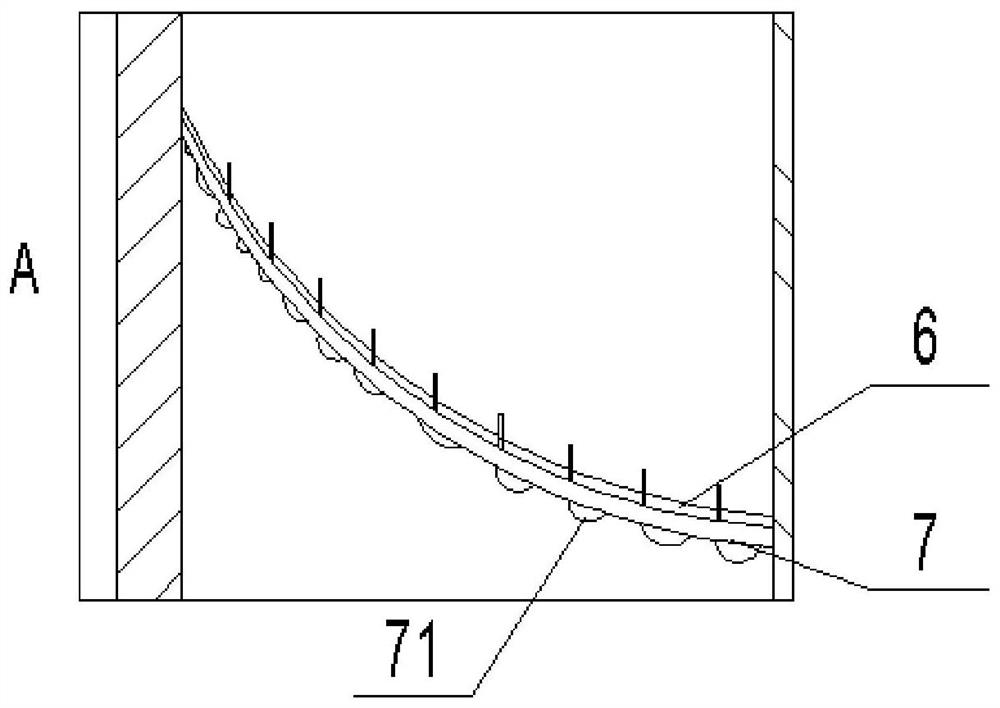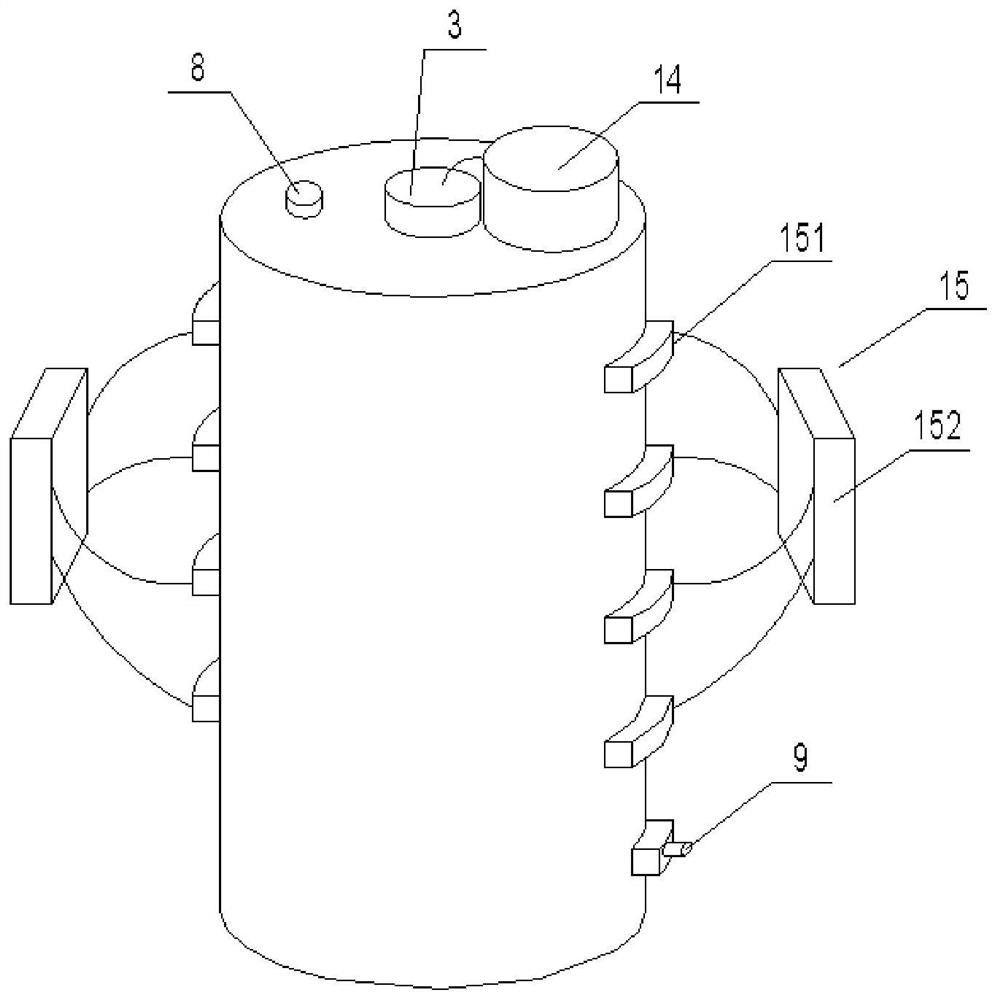Method and device for photocatalytic degradation of organic pollutants in wastewater
A technology of organic pollutants and photocatalysis, applied in water pollutants, chemical instruments and methods, oxidized water/sewage treatment, etc., can solve the problems of low reuse rate, low catalytic efficiency and activity, and difficult separation of photocatalysts. To achieve the effect of enhancing the absorption capacity, inhibiting the growth of crystal grains, and increasing the spectral response range
- Summary
- Abstract
- Description
- Claims
- Application Information
AI Technical Summary
Problems solved by technology
Method used
Image
Examples
Embodiment 1
[0046] A method for photocatalytic degradation of organic pollutants in wastewater, comprising the following steps:
[0047] S1. Preparation of Titanium Dioxide Sol
[0048] S1.1. Take 10 mL of tetrabutyl titanate and slowly drop it into 40 mL of anhydrous ethanol, fully stir and mix to obtain solution A;
[0049] S1.2. Weigh 6g of urea, add 10mL of ethanol, 8mL of deionized water and 2mL of nitric acid with a concentration of 65%, respectively, and mix and stir to obtain solution B;
[0050] S1.3, slowly dropping solution B into solution A, stirring continuously during the dropping process, and continuing to stir for 6 h after the dropping to obtain titanium dioxide sol;
[0051] S2. Preparation of Nano-ZnO Electrospun Membranes
[0052] The polymer material, acetic acid, europium nitrate, and zinc source are dispersed in ethanol in a mass ratio of 1:0.2:0.04:0.2, and after mixing uniformly, a zinc source precursor sol is obtained; wherein, the mass of ethanol in the zinc s...
Embodiment 2
[0068] The adopted device is the same as that of Example 1, and the difference from Example 1 is that,
[0069] A method for photocatalytic degradation of organic pollutants in wastewater, comprising the following steps:
[0070] S1. Preparation of Titanium Dioxide Sol
[0071] S1.1. Take 10 mL of tetrabutyl titanate and slowly drop it into 40 mL of anhydrous ethanol, fully stir and mix to obtain solution A;
[0072] S1.2. Weigh 5g of urea, add 10mL of ethanol, 8mL of deionized water and 2mL of nitric acid with a concentration of 60%, respectively, and mix and stir to obtain solution B;
[0073] S1.3, slowly dropping solution B into solution A, stirring continuously during the dropping process, and continuing to stir for 4 h after the dropping to obtain titanium dioxide sol;
[0074] S2. Preparation of Nano-ZnO Electrospun Membranes
[0075] The polymer material, acetic acid, europium nitrate, and zinc source are dispersed in ethanol at a mass ratio of 1:0.1:0.02:0.1, and a...
Embodiment 3
[0082] The adopted device is the same as that of Example 1, and the difference from Example 1 is that,
[0083] A method for photocatalytic degradation of organic pollutants in wastewater, comprising the following steps:
[0084] S1. Preparation of Titanium Dioxide Sol
[0085] S1.1. Take 10 mL of tetrabutyl titanate and slowly drop it into 40 mL of anhydrous ethanol, fully stir and mix to obtain solution A;
[0086] S1.2. Weigh 5.4 g of urea, add 10 mL of ethanol, 8 mL of deionized water and 2 mL of nitric acid with a concentration of 65%, respectively, and mix and stir to obtain solution B;
[0087]S1.3, slowly dropping solution B into solution A, stirring continuously during the dropping process, and continuing to stir for 8 h after the dropping to obtain titanium dioxide sol;
[0088] S2. Preparation of Nano-ZnO Electrospun Membranes
[0089] The polymer material, acetic acid, europium nitrate, and zinc source are dispersed in ethanol at a mass ratio of 1:0.3:0.06:0.3, ...
PUM
 Login to View More
Login to View More Abstract
Description
Claims
Application Information
 Login to View More
Login to View More - R&D
- Intellectual Property
- Life Sciences
- Materials
- Tech Scout
- Unparalleled Data Quality
- Higher Quality Content
- 60% Fewer Hallucinations
Browse by: Latest US Patents, China's latest patents, Technical Efficacy Thesaurus, Application Domain, Technology Topic, Popular Technical Reports.
© 2025 PatSnap. All rights reserved.Legal|Privacy policy|Modern Slavery Act Transparency Statement|Sitemap|About US| Contact US: help@patsnap.com



